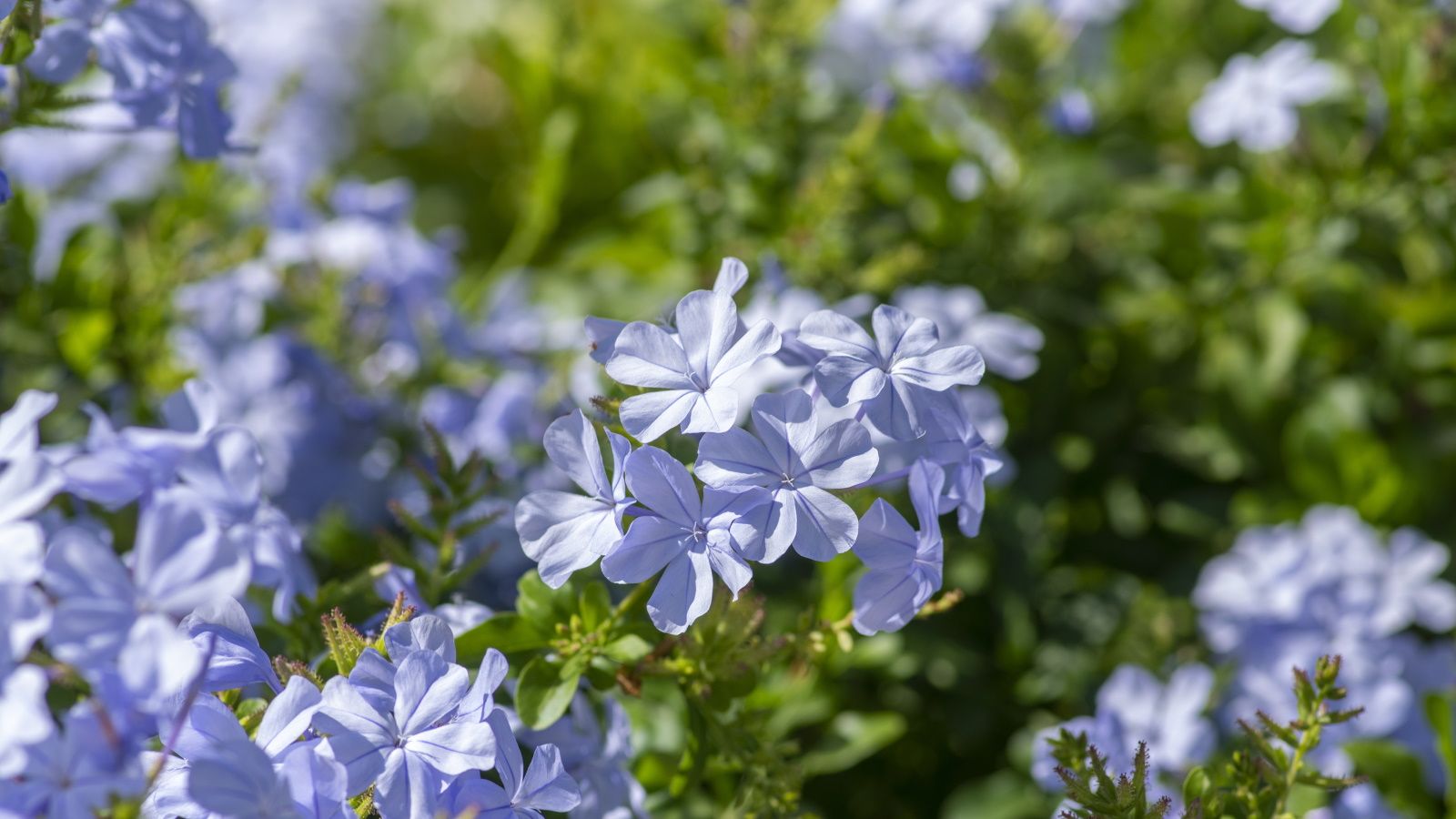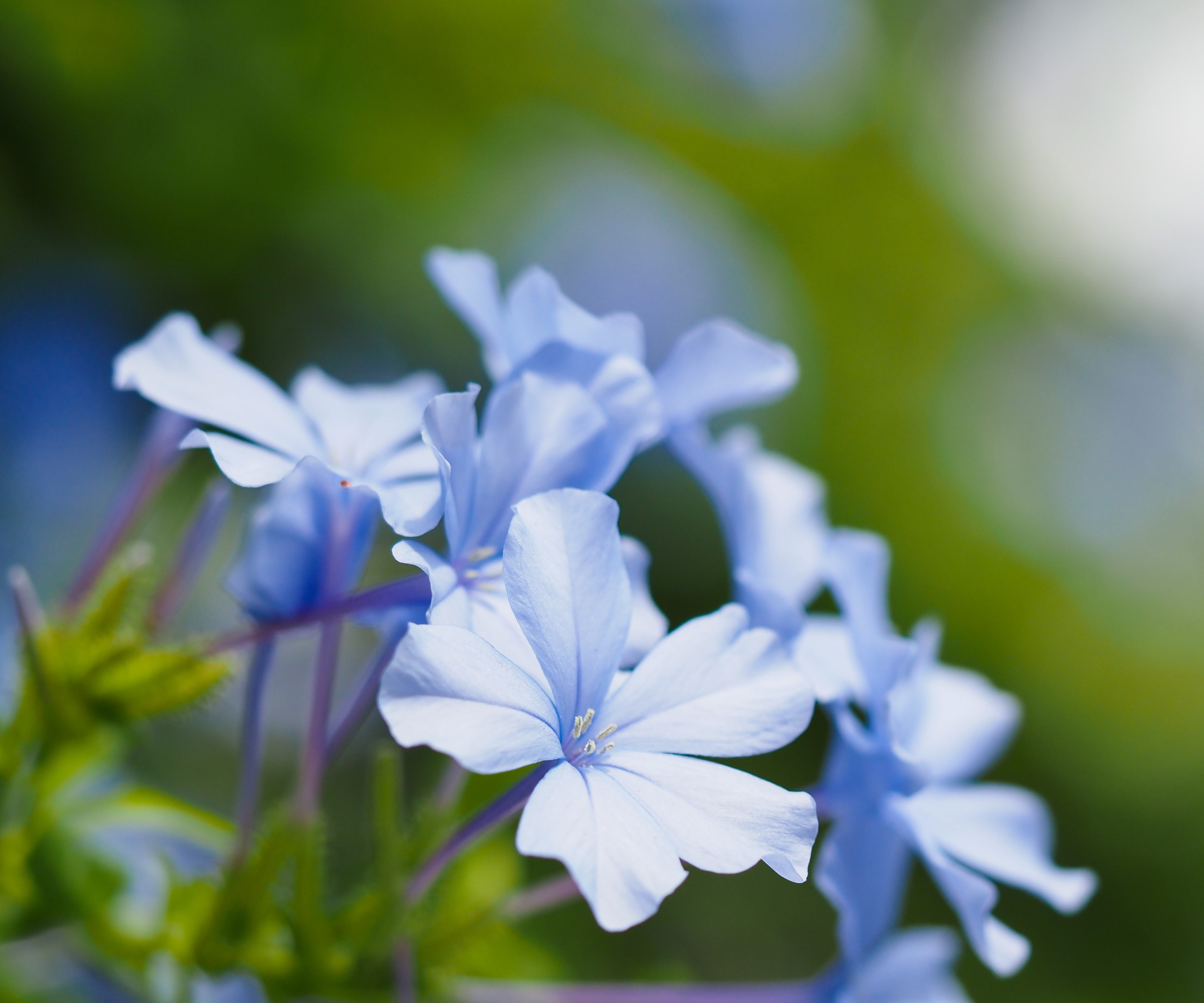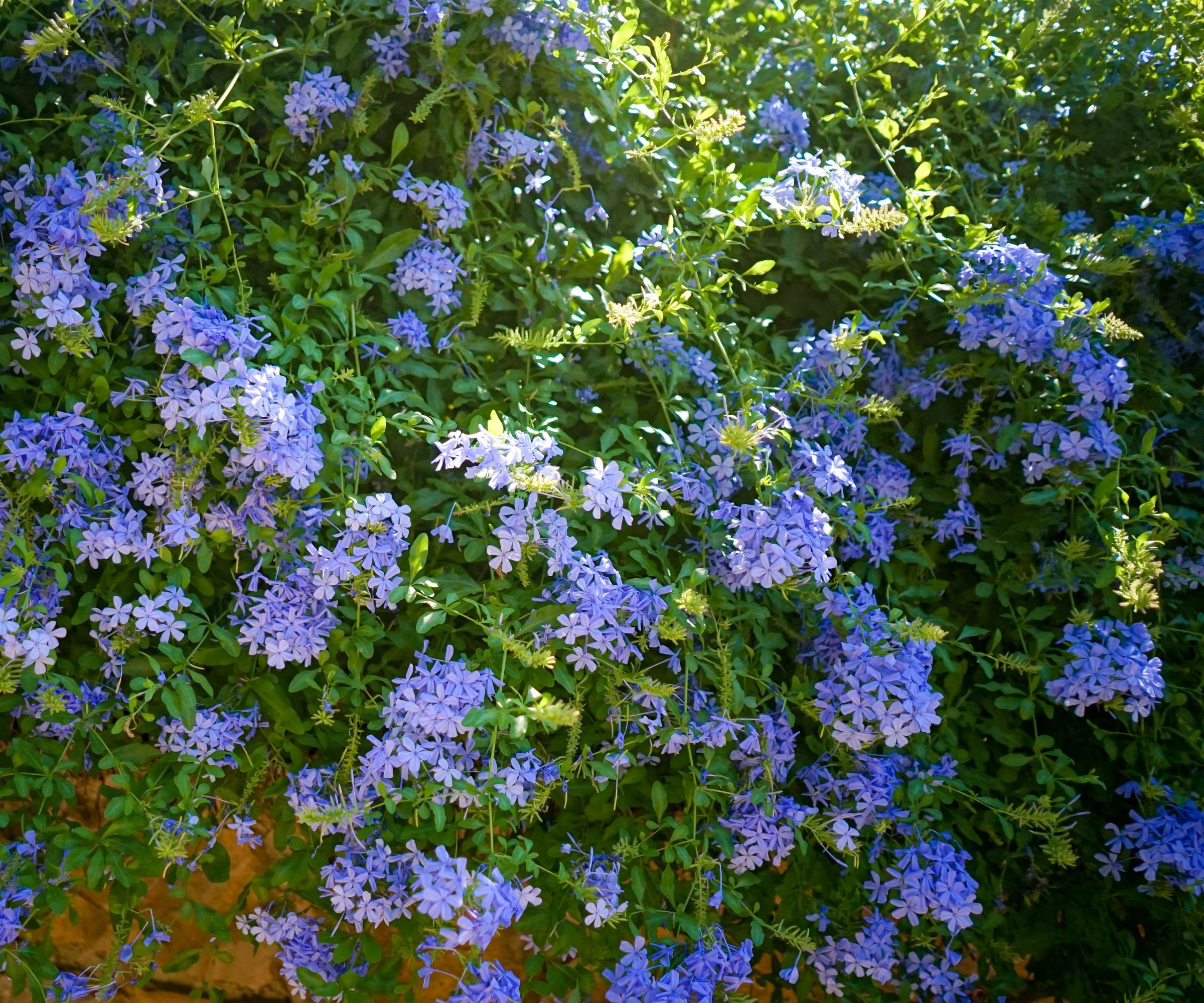
Plumbago is an impressive flowering plant prized for producing clusters of sky-blue flowers, a color that is often rare for flora. Native to South Africa, plumbago is today a popular flowering shrub for full-sun gardens and landscapes around the world, and it is easy to see why.
The popularity of plumbago is due to the profusion of delicate, five-petaled flowers that bloom in shades of sky blue, pink or white, depending on the variety. These flowers form dense clusters, creating a striking contrast against the shrub's verdant foliage.
Considered one of the best fast-growing shrubs, plumbago thrives in warmer, sunny climates, making it a favorite for gardeners who enjoy tropical and subtropical summers. What's more, for those asking how to attract butterflies to their garden borders, this ornamental shrub is a hit with pollinators. Read on for expert advice on how to grow and care for plumbago.

How to grow plumbago
Plumbago is an attractive shrub that produces masses of sky-blue flowers. Popular with both gardeners and pollinators, planting plumbago in your garden borders will add a pop of color that is sure to add impact and interest.
Things to consider about growing plumbago

As a shrub native to South Africa, plumbago thrives in sunny and warm situations. In the United States, it grows well in states with hot summers and mild winters, including Texas, Florida and California.
'Plumbago is only hardy in US hardiness zone 9 to zone 11,' says Tricia Hunt, plant expert and owner of Millstone Nursery. While it can be grown in cooler zones, it might not survive the frosty winter months, meaning that it should be treated as an annual in cooler zones. For example, in US hardiness zone 4, it would not survive the winter.
'In warmer zones, plumbago can be grown as a shrub in garden borders,' adds Tricia. 'Coming in three colors, white, blue and pink, but most notable for the blue, plumbago can bloom year-round in these zones.'
In cooler zones, 'consider planting plumbago as a seasonal container plant,' Tricia continues, adding a flash of pale blue to your pot displays that can either be grown an annual plant, or moved indoors to a heated greenhouse when the temperatures begin to drop. It is important to remember that with tender, tropical shrubs, such as plumbago, cold weather can irreparably damage or kill your plant.
'Plumbago shrubs are enjoyed for their long bloom time,' Tricia says, and helpfully, they are both 'pest-free and deer-resistant.' So, if you have a sunny, sheltered spot in the backyard, plumbago might just be the vibrant, low-maintenance plant you need.
Growing advice for plumbago

- Soil: 'Plumbago is a true gem for southern landscapes and pot gardening in non-tropical conditions,' says Tatiana Anderson, plant expert and co-founder of Top Tropicals. 'It prefers well-drained soil,' adds Tatiana, and can grow well in slightly acidic or slightly alkaline soils. If growing plumbago in a container, ensure that you incorporate drainage material with your potting mix, such as grit, to create a free-draining environment.
- Light: This shrub 'thrives in full sun to partial shade,' says Tatiana. Plumbago is 'adaptable to a variety of environments, making it an excellent choice for the often unpredictable climates of the southern and warmer regions.' Additionally, it is 'remarkably tolerant of direct sunlight and heat,' adds Tatiana, making it an ideal candidate for garden borders in these zones. While plumbago can tolerate partial shade, the less sunlight it receives, the fewer blooms it will produce.
- Watering: Plumbago 'requires only moderate watering,' Tatiana says, and is 'remarkably tolerant of drought.' During the first year after planting, it is recommended that you water your shrub regularly, monitoring the soil every week during the summer months.
- Fertilizing: Apply a balanced, general-purpose fertilizer to your plumbago shrub in early spring and then again in late autumn, using something like this plant feed from Walmart.
- Pruning: 'One of the remarkable qualities of plumbago is its rapid growth rate,' says Tatiana. 'Under favorable conditions, it can grow several feet in a single season, quickly filling spaces with lush foliage and vibrant blooms.' While it doesn't necessarily require frequent pruning, 'occasional trimming can help maintain its shape and encourage more prolific flowering,' Tatiana adds. It is recommended that pruning is completed in the early springtime before new growth begins to emerge. Doing so will help to maintain a compact and bushy form.
- Additional Tips: While plumbago makes for an attractive shrub in the backyard, it 'possesses a sprawling growth habit, making it suitable for training as a climber against walls or fences,' Tatiana says. While plumbago might not often be thought of as one of the best climbing plants, 'with the help of some gentle support and occasional tying in, using something like this garden twine from Walmart, it can gracefully ascend vertical surfaces, adding a vertical dimension to your landscape design.' This feature makes it an excellent choice as one of the best shrubs for privacy, adding screening in your outdoor space where it is needed.
FAQs
Can I grow plumbago in a container?
Yes, plumbago is a great shrub to grow in a container. This is recommended if you are living in a cooler zone, as you can protect your container during the winter months. Use a good potting mix with plenty of drainage material, ensuring that you water and feed your plumbago regularly during the growing season.
In what hardiness zone does plumbago grow?
Plumbago is hardy in US hardiness zones 9 to 11. Growing in these zones, your plumbago shrub will thrive in full sun or partially shaded position. Plumbago is a tender shrub, meaning that in cooler zones it will not survive the chill and frost of winter. It is recommended that if you live in a cooler zone, such as US hardiness zone 6, plumbago should be grown in a container so that it can be protected during the winter.
Enjoy a profusion of pale-blue blooms by planting plumbago in your garden borders this year. If your location and climate allows, consider also adding other tropical blooms for a colorful display. For example, learn how to grow hibiscus for masses of red, pink or yellow flowers to add to the blue blooms of plumbago.







